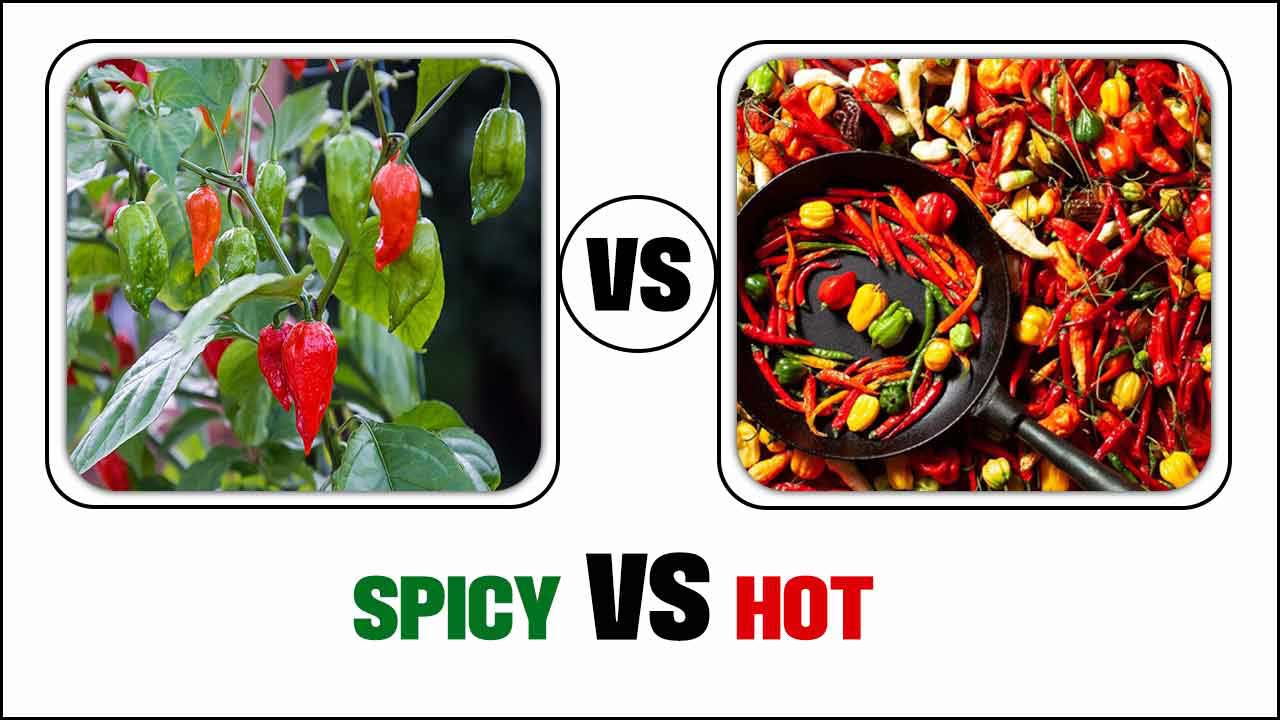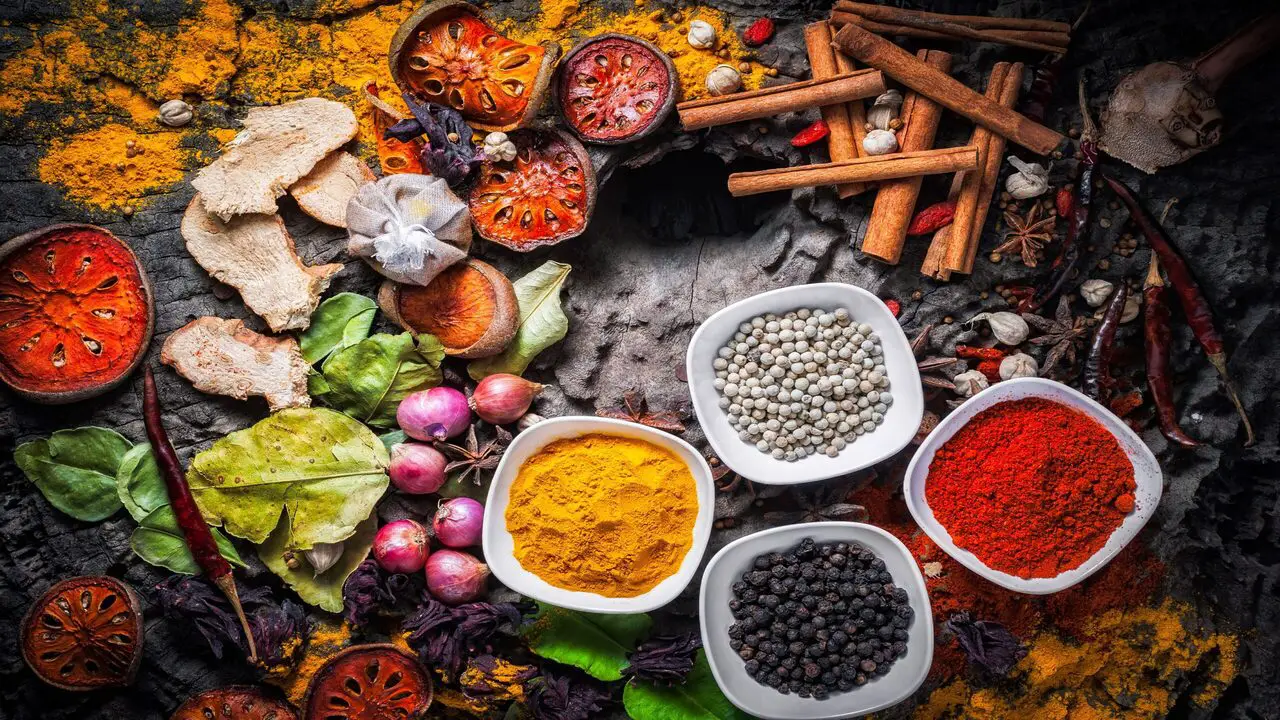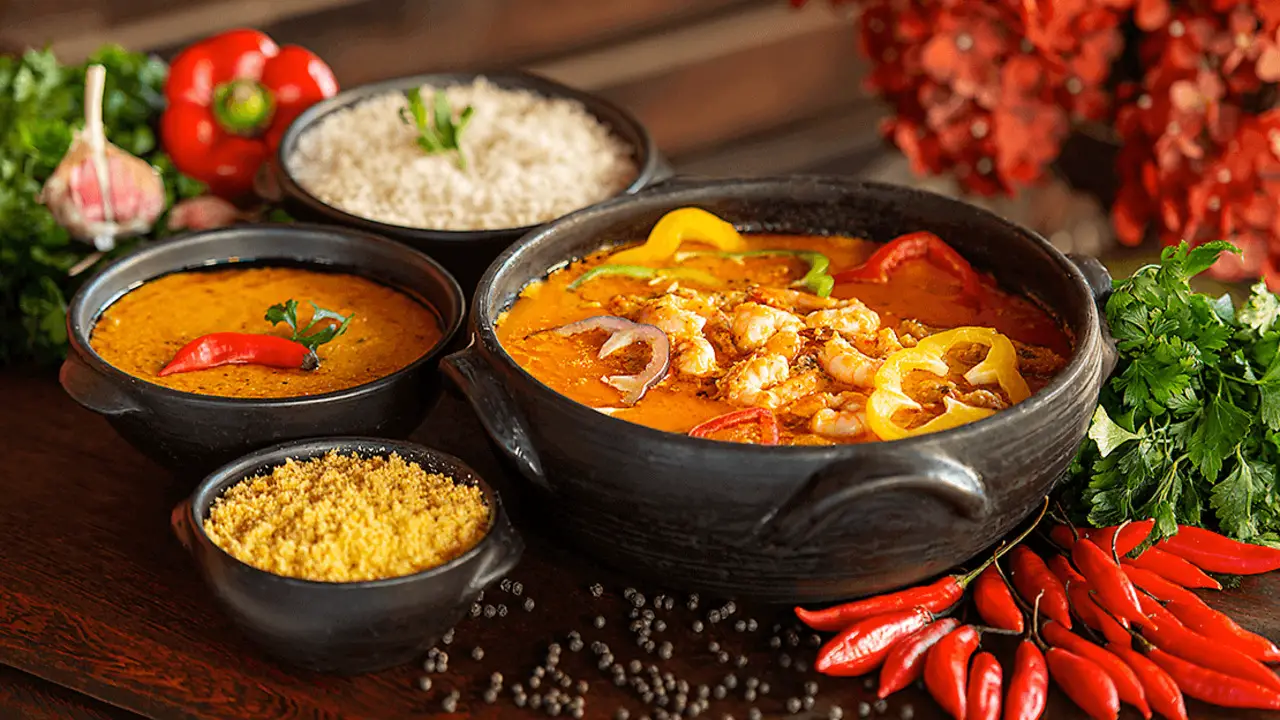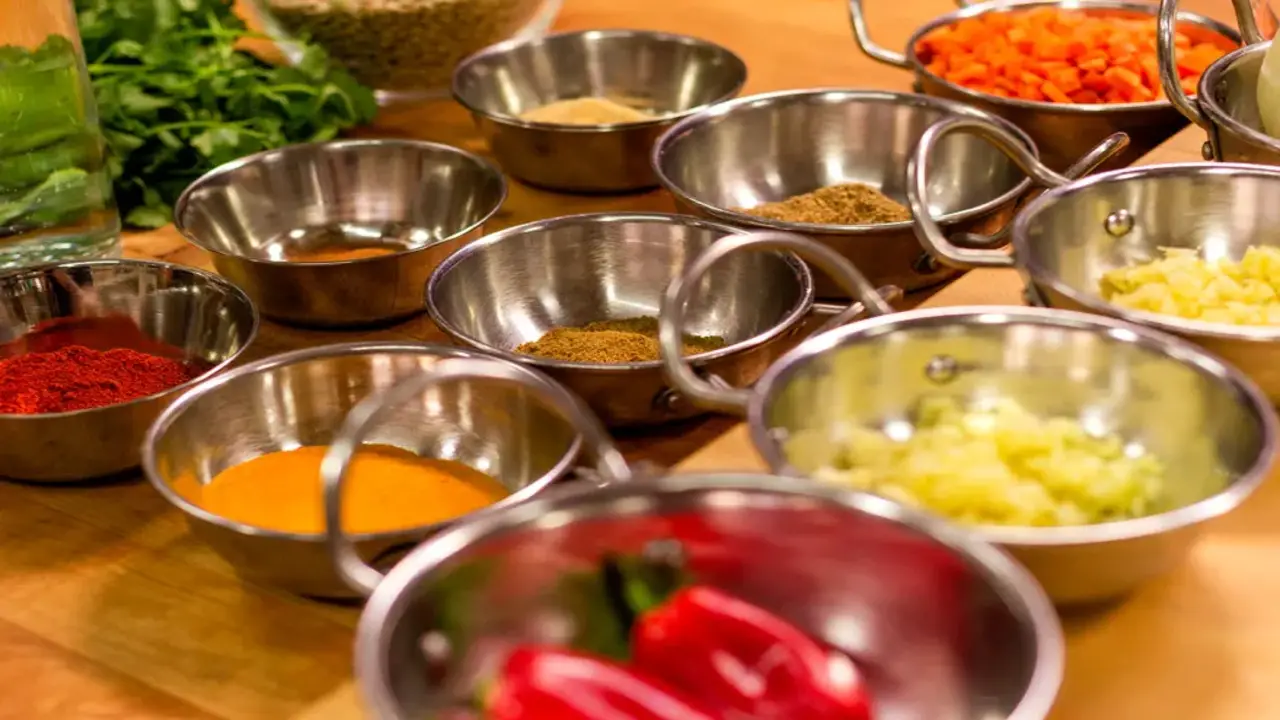Spicy vs hot are two terms that are often handy interchangeably when it comes to describing food. However, there is actually a nuanced difference between the two.
Spicy refers to foods that contain a variety of spices, such as cumin, coriander, and turmeric, which add flavour and complexity to a dish. On the other hand, hot refers to foods that contain chilli peppers and cause a burning sensation in the mouth.
While many people associate spicy with hot, it is important to note that not all spicy foods are hot, and not all hot foods are necessarily spicy. Understanding the difference between spicy and hot can be helpful when cooking and ordering food, as it can help you choose dishes that suit your preferences. We will explore the differences between spicy and hot and provide some tips for incorporating both into your meals.

Defining “Spicy” And “Hot”
“spicy” and “hot” are often used interchangeably, but they actually mean different things. Spiciness refers to using spices in a dish, such as chilli powder, cumin, or paprika, which can add flavour and heat. On the other hand, “hot” specifically refers to the heat level in a dish, which is often measured using Scoville Heat Units (SHUs). Spiciness can be subjective, as different people have different tolerances for spice.
Some people love spicy food and can handle high heat levels, while others find even mild spiciness too overwhelming. The level of spiciness can also vary depending on the type of spice used and the amount used in a dish.
On the other hand, heat is more objective and can be measured using a scale of SHUs. For example, jalapeño peppers typically have between 2,500 and 8,000 SHUs, while habanero peppers can have up to 350,000 SHUs. The higher the number of SHUs, the hotter the pepper and the dish made with it will be.
Spices And Cultural Identity

Spices have always been an essential part of various cultures. They add flavour and aroma to our food and reflect our cultural identity. Spices can vary from region to region and even from household to household, but they always play a significant role in our culinary traditions.
In the debate between “spicy” and “hot”, it is important to understand that these terms are not interchangeable. “Spicy” refers to using a variety of spices to add flavour and depth to a dish, while “hot” refers to the level of heat or spiciness in a dish caused by chilli peppers or hot sauce. Different cultures have their own unique take on spices.
For example, Indian cuisine is popular for its intricate use of spices such as turmeric, cumin, coriander, and cardamom. These spices are used to create complex spice blends like garam masala and curry powder used in various dishes. On the other hand, Mexican cuisine uses chilli peppers like jalapeños and chipotle to add heat and flavour to their dishes.
What Is The Difference Spicy Vs Hot?

Spicy and hot are often handy interchangeably, but they’re different. Spiciness refers to how much flavour and heats a spice or herb provides, while hotness refers to the heat level in a dish due to capsaicin, the compound that makes peppers spicy.
Both spicy and hot dishes have their own unique benefits. Spicy foods can help boost metabolism, reduce inflammation, and improve heart health. They can also add a lot of flavour to a dish without adding extra calories. However, hot foods can help relieve pain and congestion, boost immunity, and provide a natural energy boost.
Not everyone can handle spicy or hot foods, and some people may experience discomfort or even health issues if they consume them. Here is explained of what the difference is Spicy vs hot.
The Science Behind Spiciness And Heat
The sensation of spiciness and heat in our favourite dishes is rooted in the fascinating science of capsaicin. When we consume foods containing chilli peppers, capsaicin binds with receptors on nerve endings in our mouth and skin. This interaction triggers a burning sensation, fooling our brain into thinking our mouths are experiencing real heat.
The intensity of this sensation is measured on the Scoville scale, which quantifies the heat levels in chilli peppers. Each pepper variety has a distinct capsaicin content that determines its position on the scale, from mild bell peppers to fiery habaneros and beyond. Embracing the science behind spiciness can enhance our culinary adventures and appreciation for bold flavours.
The Scoville Scale
The Scoville scale, devised by pharmacist Wilbur Scoville in 1912, revolutionized how we understand spiciness and heat in foods. The scale quantifies the concentration of capsaicin, the compound responsible for the fiery sensation in chilli peppers.
Starting from 0 (indicating an absence of capsaicin), the scale progresses to millions of Scoville Heat Units (SHUs) for pure capsaicin. For example, a bell pepper scores 0, while a habanero pepper ranges from 100,000 to 350,000 SHUs. This scale allows us to make informed choices when adding spiciness to our dishes, ensuring we stay within our comfort level while exploring the delightful world of chilli peppers.
Varieties Of Spices And Heat Levels

Spices add depth, complexity, and, in some cases, heat to culinary creations worldwide. Various spices contribute to distinct levels of spiciness, enriching the flavours of different cuisines. Black pepper, for instance, delivers a mild but noticeable heat, while paprika offers a sweet and smoky spiciness.
Mustard seeds add a tangy pungency, and ginger brings a subtle warmth. The crown jewel of spiciness, however, remains the chilli pepper family. From the mild jalapeño to the scorching Carolina Reaper, chilli peppers captivate taste buds and elevate dishes. Understanding these spice varieties allows us to experiment with diverse flavours in our cooking.
The Role Of Capsaicin
Capsaicin, the fiery compound found in chilli peppers, is the key to the burning sensation experienced when eating spicy foods. Beyond its culinary impact, capsaicin offers an array of potential health benefits. Studies suggest that capsaicin may aid in pain relief by reducing the intensity of pain signals sent to the brain.
Additionally, it is thought to promote weight loss by increasing metabolism and reducing appetite. Moreover, capsaicin may have anti-inflammatory properties and can assist in improving heart health by lowering blood pressure and cholesterol levels. This multifaceted compound delights our taste buds and contributes positively to our overall well-being.
Health Benefits Of Spicy Foods
The love for spicy foods extends beyond their enticing flavours, as they offer various health benefits. One significant advantage of spicy foods lies in their potential to aid digestion. Spices like ginger and cumin can soothe the digestive system and alleviate discomfort.
Moreover, the capsaicin in chilli peppers has been shown to trigger endorphin release, improving mood and reducing stress levels. Spicy foods may also help in opening nasal passages and easing congestion. Some research suggests that regularly consuming spicy foods might be associated with a longer lifespan. While moderation is essential, incorporating spicy foods into our diets can bring pleasure and potential health rewards.
Common Foods And Dishes That Are Spicy Vs. Hot

When exploring the world of flavorful cuisine, it’s essential to differentiate between spicy and hot foods. Spicy dishes focus on a delightful blend of spices, offering a symphony of flavours. Examples include aromatic curries from India, jerk seasoning from the Caribbean, or Sichuan cuisine from China, which balances a mix of spices like Sichuan peppercorns and dried chilli peppers.
On the other hand, hot foods are all about the fiery sensation brought on by chilli peppers. Dishes like the spicy Thai papaya salad “Som Tum” or the Korean “Buldak” chicken challenge taste buds with intense heat. The choice between spicy and hot dishes ultimately depends on individual preferences and tolerance for capsaicin’s scorching allure.
Regional Differences In Spicy Vs Hot Foods
Culinary traditions worldwide demonstrate diverse approaches to incorporating spiciness and heat into their cuisines. Spices are central to flavouring dishes in regions like India and Thailand, creating aromatic and richly layered experiences. Indian curries infuse a harmonious blend of spices, while Thai dishes balance sweet, sour, salty, and spicy elements.
On the other hand, Latin American and Asian cuisines celebrate the boldness of chilli peppers, embracing the heat with iconic dishes like Mexican salsa, Korean kimchi, or Ethiopian berbere-spiced stews. While some regions may emphasize spiciness overheat or vice versa, the global culinary landscape is a tapestry of thrilling flavours, captivating both the adventurous and the comfort-seeking palates.
Personal Preferences: Spicy Vs. Hot
The debate between spicy and hot foods is as diverse as the flavours. Some individuals relish the complexity of spiciness, savouring the interplay of various spices in a dish. They enjoy the depth and character these seasonings bring to their culinary experiences. Conversely, those who adore the adrenaline rush of heat gravitate towards the tongue-tingling allure of chilli peppers.
They seek the thrill and intensity that accompanies every fiery bite. Interestingly, personal preferences for spiciness and heat can evolve over time, as individuals may gradually build a tolerance for capsaicin or develop an appreciation for different spice combinations. Whether one’s palate prefers a gentle warmth or a scorching inferno, the beauty of the culinary world lies in its ability to cater to diverse tastes.
Cooking With Spices And Heat

Mastery in the kitchen often involves skillfully understanding how to wield spices and heat. The judicious use of spices can transform ordinary ingredients into extraordinary culinary creations. Chefs and home cooks harness spices like cinnamon, turmeric, and cayenne to enhance flavours, experiment with cultural authenticity, and invigorate palates.
Balancing heat, however, requires a more cautious hand. Careful consideration of individual tolerance levels is crucial, as excessive heat can overpower other flavours and overwhelm the dish. Beginners can add small amounts of chilli pepper and gradually increase it to suit their desired spiciness. By experimenting and embracing the nuances of spices and heat, cooks can embark on a gastronomic journey that tantalizes taste buds and unlocks a world of culinary possibilities.
Conclusion
The debate between spicy vs hot will continue to be a discussion among food enthusiasts for years to come. While both terms are often used interchangeably, it is important to note that they are not the same thing. Spicy refers to the flavour and sensation of food that comes from spices and seasonings, while hot refers to the level of heat and intensity of peppers in a dish.
By being specific in our language and understanding the differences between these terms, we can successfully communicate our preferences and experiences with others. Whether you prefer spicy or hot dishes, the key to success is in knowing your own tolerance and exploring new flavours safely and enjoyably.
FAQ’s:
1.Can Spicy Foods Cause Any Health Issues?
Ans: While spicy foods can be enjoyable for many people, they may cause digestive discomfort for some, like heartburn or upset stomach. However, moderate consumption for most individuals can actually have health benefits, such as boosting metabolism and providing antioxidants.*
2.How Can I Handle The Heat Of Spicy Foods?
Ans: To handle the heat of spicy foods, gradually increase your tolerance by starting with milder dishes. Sipping milk or eating yoghurt can also help soothe the burning sensation. Additionally, rice, bread, or other carbohydrates can temper the spiciness.*
3.Are There Any Cultural Differences In Handling Spicy Foods?
Ans: Yes, cultural differences exist in handling spicy foods. Some cultures have a high tolerance for spice due to a long history of using hot peppers and spices in their cuisines. Others may find spicy foods challenging, as they aren’t as accustomed to regularly consuming them.*
4.Can Spicy Foods Cause Damage To The Taste Buds?
Ans: Spicy foods don’t cause permanent damage to taste buds. However, consuming extremely spicy foods can overwhelm the taste buds temporarily, leading to a desensitized sensation. This effect is temporary and should return to normal after a short while.*
5.What Are Some Popular Spicy Dishes From Around The World?
Ans: Many countries have iconic spicy dishes, such as India’s Chicken Vindaloo, Thailand’s Tom Yum Soup, Mexico’s Chili Con Carne, and South Korea’s Kimchi. Each dish showcases the unique use of local spices and chilli peppers.
